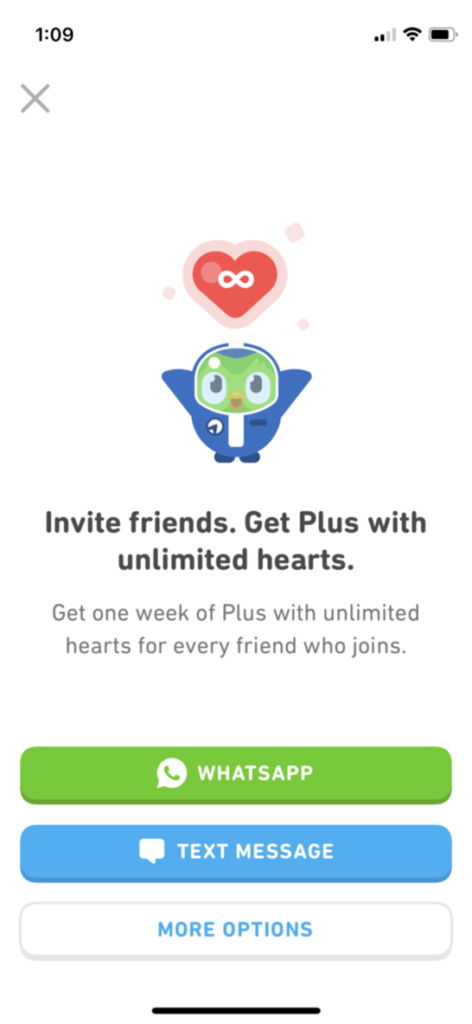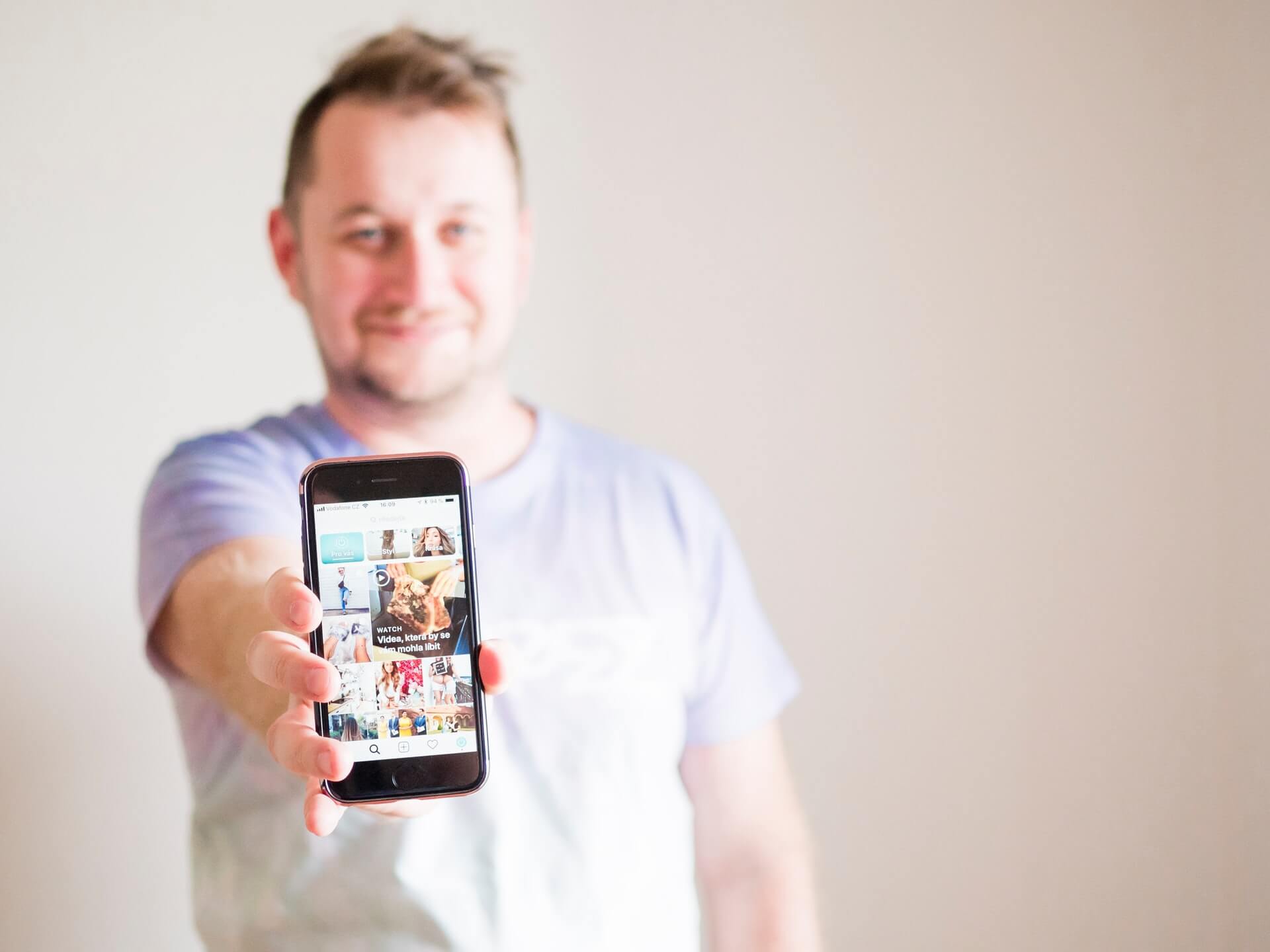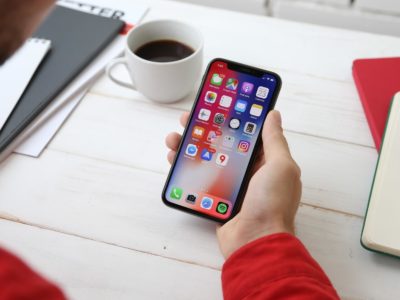Mobile marketing is one of the fastest-growing segments of advertising, but there isn’t just one way to succeed. There are many ways, all of which have different values and uses.
Consider starting the six types of mobile marketing campaigns below right now; the sooner you begin, the sooner you can start reaping their benefits.
Why Mobile Marketing Campaigns Matter
Americans spend more than three and a half hours per day using the mobile internet, but that doesn’t mean you can reach them just because they’re there. There’s so much competing content out there that getting their attention, generating trust, and meeting their expectations takes more work than ever before.
However, while it takes work, it’s not as hard as many newcomers to the industry believe. Read the article below to discover the six mobile marketing campaigns we recommend most.
10 Mobile Marketing Campaign Examples to Learn From
You can use many types of campaigns to capture and engage your audience, with each having its own purpose and way of implementation. Here are some of the best mobile marketing campaign examples you can learn from.
1. Dynamic Content Mobile Marketing Campaigns
Dynamic content mobile marketing campaigns (that’s a mouthful, isn’t it?) are some of the most effective ways of reaching people. Here’s what you should know about them.
A dynamic content mobile marketing campaign is one that seeks to pull a reader in and provoke some type of action on their part based on their preferences, behavior, and also their interests. Dynamic content is successful because people who choose to engage with your content are significantly more likely to convert into paying customers.
How To Do It Well
You should use dynamic content marketing when you’re trying to boost engagement. This type of mobile campaign incorporates up-to-date, customized, and relevant information for users. The information is based on their location, subscriptions, previous behavior, device type, or browser. If the user has already created an account on the site, more specific data can be used such as gender, previous actions made, or previous products or services the user visited. This type of marketing works best when users are interested in engaging with content and are actively searching for more information about it.
Dynamic content mobile marketing campaigns are more than the standard customization of adding a user’s name into the “To” field. They enable marketers to personalize more details such as text, imagery, calls to action, so a highly relevant piece can be tailored and sent to many users with just a few clicks.
Songkick, for example, notifies its users when one of their favorite artists has a concert nearby. You can see the example below:
Dynamic content can be used to pull in product information or push notifications based on weather conditions for each recipient. The benefit of dynamic mobile marketing campaigns is that there is an increase in the conversion rate compared to sending messages that are not personalized. This leads to deeper engagement and increased chances for your users to sign up for a subscription or make a purchase.
2. Transactional Mobile Marketing Campaigns
Transactional marketing campaigns are probably the most effective type of marketing you can do.
What Is It And How Does It Work?
A transactional mobile marketing campaign is a time-sensitive event that users expect to go through when they perform certain actions on your site. For example, creating accounts and getting order confirmations are transactional activities.
These marketing campaigns are effective because users actively engage with material like this and are far more responsive to prompts and offer you provide during them. You can set these up for a variety of campaigns to drive sales and profits.
For example, if someone needs to return a product, you can use transactional marketing to send an email to their device, apologizing for their experience and offering them some type of benefit on their next order. This could be a discount, free shipping, or anything else that’s relevant to the campaign.
You can base transactional campaigns off of exact user activity, so it’s easy to coordinate your messaging between them and other marketing campaigns.
3. Location-Based Mobile Marketing Campaigns
Location-based campaigns are most effective when you have physical locations and some way of tracking where users are.
How Do They Work?
A location-based mobile campaign triggers when a user brings a particular mobile device to a certain area. For example, if you have a restaurant at a mall, you could send a message when they arrive at the mall with an offer if they eat there before the end of the day.
This is different from general location-based campaigns, which focus more on where people live. People take their mobile devices with them, so you can send different types of messages and offers.
Pizza Hut restaurants uses a location-based mobile marketing campaign to regain a more vibrant tone of voice and customized content including targeted discounts and promotions as you can see below:
However, make sure you respect your users’ privacy and, preferably, give them a chance to opt-in to the program. If users feel like you’re stalking them or being intrusive, they’ll just cut and run. However, if they agree to receive offers, they’ll pay far more attention to anything you have to say.
4. Onboarding Mobile Marketing Campaigns
Onboarding campaigns are the most effective option when you have a new customer, and you want to improve their early experience with you.
How Do Onboarding Campaigns Work?
Onboarding campaigns help users learn important information about their relationship with you, particularly when it comes to learning how to use your app or site.
For example, you can use an onboarding campaign to teach people how to use specific parts of your software, then reward them for completing it. Several small rewards given out in a row can give people an extremely positive impression of you.
However, make sure you adjust your onboarding campaigns to people’s lifestyles. If it takes ten hours to teach someone how to use an app, don’t try to teach everything at once. Instead, break it into manageable steps that they can complete at their own pace.
Headspace sends a welcome email to each new user and provides clear instructions on how to use and benefit from their platform. Besides, there are clear calls to action and roadmaps and clear calls to action for better guidance and to know the user what to expect once they complete the basics.
If you want to encourage them to do things faster, reward them, and specifically describe it as a time-limited extra. For example, “complete this tutorial in 7 days, and we’ll give you a bonus $5 credit on your next order.” Never frame it negatively. If people think they’re punished for failure, rather than rewarded for success, the outcomes will be far worse.
5. Activity Mobile Marketing Campaigns
Activity mobile campaigns work best for people who are especially social or interested in others.
How Do Activity Campaigns Work?
Activity-based mobile marketing campaigns occur when one user does something in-app, and mobile analytics triggers a notification to other people about what that person is doing. The key to success here is finding the right number of notifications to send.
For example, if someone is playing a mobile game and the game sends notifications to all of their friends every time they beat a level, that’s going to get very annoying, very quickly.
However, if notifications only go out when users reach certain milestones, that’s less annoying. It’s even better if both people play the game and there’s some type of prompt to catch up with them.
As you can see in the below examples from Untappd, this type of campaign brings users to your app by letting them know about activity by those they follow or friend.
Remember, these types of campaigns only work when people want to interact and know what their friends are up to. Otherwise, these only become intrusive and annoying. Make sure people can opt-in to these. Tempt them with rewards if needed, but moderate yourself to be sure you don’t annoy your customers.
6. Triggered Mobile Marketing Campaigns
Triggered campaigns are similar to transactional campaigns, but users don’t expect to receive the messages. Just like transactional campaigns, you can set triggered campaigns to happen in response to almost any type of activity that users may perform while using your app or visiting your site.
How Do Triggered Campaigns Work?
Triggered campaigns occur when users perform specific actions and you want to respond to those. For example, if somebody leaves something in their cart for a week but doesn’t purchase it, you can send an email with a time-limited discount to encourage them to buy it.
Triggered campaigns are more effective than reaching out blindly because they’re responsive to users and you can tailor them to specific behaviors. Research is important for every mobile marketing campaign, but it’s particularly important here to improve performance marketing capabilities.
For example, after users are signing up for Wikibuy, they receive a welcome message email that includes all the details about what the product provides. Let’s assume the user signed up for a different feature, but he didn’t know that the company also provides credit back on purchases, so he is introduced to an unknown benefit or feature.
Proper research will tell you both what behaviors people are likely to perform and what types of triggered campaigns they’re likely to respond to. Even something as simple as a “thank you” for liking a product can be enough to generate a positive experience and get customers to keep interacting with you.
7. Upsell Mobile Marketing Campaigns
Upsell marketing campaigns work best if you have several products or high-end items. You can use this type of campaign and triggered marketing campaigns to respond to user activity on your app or website.
How Do Upsell Campaigns Work in Mobile Marketing?
Upsell campaigns occur similarly to triggered campaigns in that they respond to what a user does but aim to convince them to buy more products or a more expensive item. For instance, if a user is looking for an item of clothing, you can list clothing sets that already include the item on the product page so they can have an entire outfit ready upon purchase.
There are other ways to utilize upselling techniques. One is through push notifications or an email to promote your latest deals, which can spark more interest from newer users or reactivate older customers.
For example, a user subscribed to Stitch Fix may receive promotional materials encouraging them to purchase additional essential items like socks and underwear on top of their existing order.

Remember that when upselling, the customer needs to see that spending more is worth it. So look into what can make your more expensive items attractive to customers, such as highlighting their features or framing them as a must-have.
8. Win-back Mobile Marketing Campaigns
Win-back mobile campaigns work best if you have a pool of inactive or former users that you want to reactivate to try your product or service again. Reignite their interest by sending a personalized message and adding a discount or other incentive.
How Do Win-back Mobile Campaigns Work?
Win-back mobile campaigns occur when users haven’t visited a website for a while or when they unsubscribe from a service. To increase the likelihood that they’ll come back, you can offer an incentive such as a free item or a discount to use your service. The key is to send gentle nudges by emailing their device, though you must remember not to send too many.
It is better to reactivate customers because it’s easier to sell your products to them since they’ve already used them. It’s also more expensive to acquire new customers every time. However, before sending reactivation emails, it’s crucial to research why you’ve lost them in the first place.
A user who had previously used Teespring could receive the email below, reminding them of what they’ve accomplished on the platform. The email feels personal because of the casual language and the picture of the sad puppy that can tug at the user’s heartstrings.

Like the Teespring email, you can indicate significant milestones the user achieved on your platform.
Also, don’t be afraid to make your tone casual to make the email more personalized to the user.
Remember not to send too many reactivation messages because it can make you seem desperate and irritate the user.
9. Feedback Collection Mobile Marketing Campaigns
Feedback collection campaigns work best if you want to know what customers are thinking, how they respond to a new feature, or if you want to gather new ideas.
How Do Feedback Collection Campaigns Work?
There are several ways to collect feedback through your app or website. You can place feedback buttons in the corner of the page or have pop-up surveys whenever a customer makes a purchase, browses through the FAQs, or takes any other action. It is important to keep the user experience in mind when presenting them with surveys.
Evernote doesn’t waste any of its users’ time, giving concise surveys that ask them to rate their experiences. It also allows users to provide more feedback in the future by including an option to send more questions.

Short surveys allow you to get more specific data that’s easier to sort through. If you want to create longer surveys, put the duration in the prompt, so the customer knows how much time they’ll spend
10. Referral Mobile Marketing Campaigns
Referral marketing campaigns work best if you want to grow your customer base through existing users who have become brand advocates. Chatter Matter’s 2018 report states that 83% of customers are more likely to purchase a product if they hear about it from a family or friend, so it’s a perfect way to utilize word-of-mouth to drive sales.
How Do Referral Campaigns Work?
The key to referral campaigns is offering incentives to existing customers. These can take the form of reward tiers where each referral moves you to better rewards or time-limited exclusive rewards.
A user of Duolingo daily can refer a friend or family member and receive a free week of access to its premium features. The premium features include no ads and unlimited hearts so they can keep learning their desired language.

When implementing a referral program, know which customers to target. For instance, you can roll out the program to either your oldest or most active users and compare the data, giving you a better idea of where to improve moving forward. Also, look into integrating social media applications to make sharing and referrals easier.
Time to Go Mobile!
These six types of mobile marketing campaigns can help your business maximize its profit potential, but only if you implement them well.
Similarly, make sure you research what your users want. Most groups are far more receptive to certain types of advertisements, and in the end, marketing is about what they want. By researching ahead of time, you can choose the marketing campaigns that will be the most successful instead of hoping your choices work out.
Successful mobile marketing campaigns are the result of both research and a degree of trial and error. Don’t be afraid to start with a small group of users and slowly expand outward as you find what works. This tends to be more effective than pouring all of your marketing budget at the start.
Getting started can be a little overwhelming, so if you don’t have the resources to go at it yourself, outsourcing is always an option. However, make sure you read a mobile app designer hiring guide before you start looking for help. A good mobile app designer can examine your software and explain the best way to support your mobile marketing campaigns.
To put it another way, it doesn’t matter how well you plan the campaign if you don’t have the specialists and technology to make it work. So, be sure to take that into consideration.






